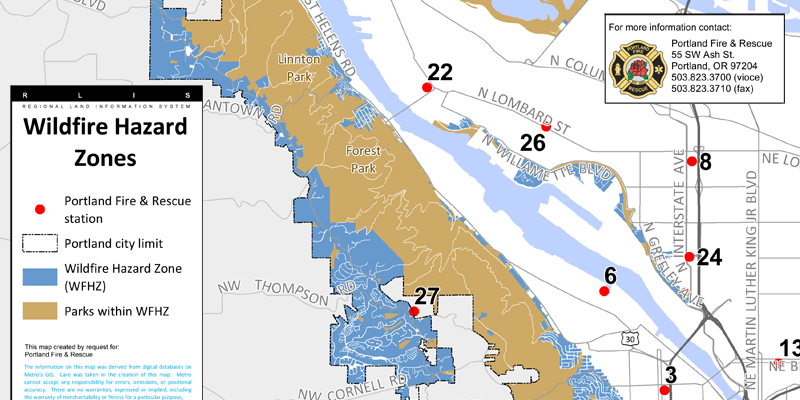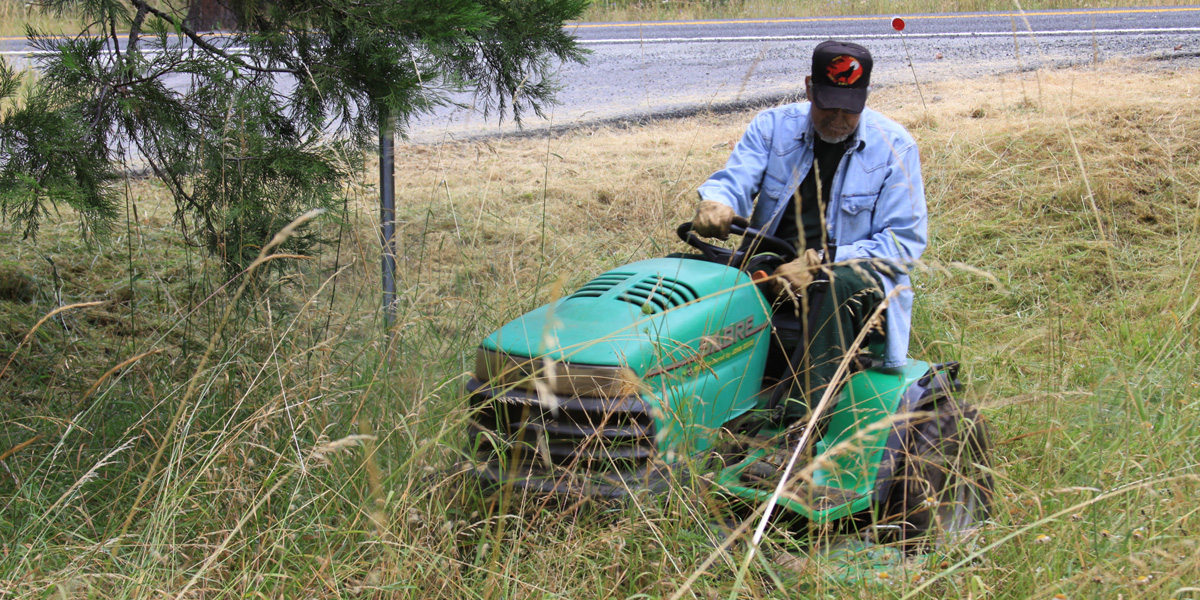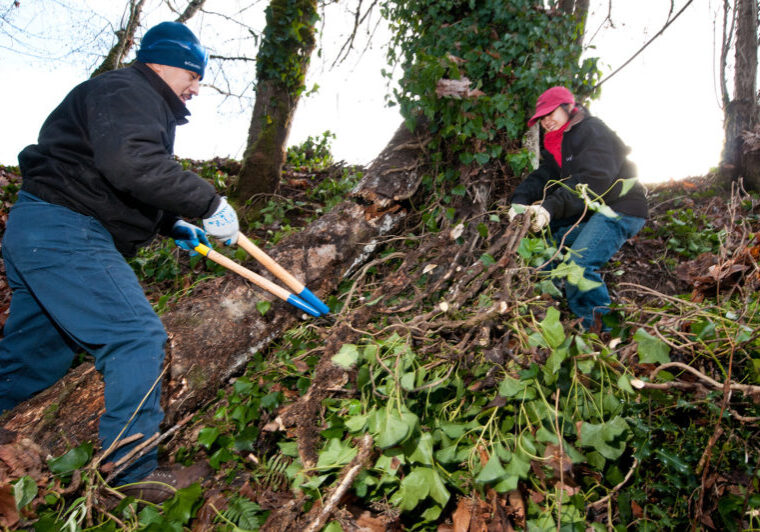(Photo: Mowing tall grass around the home can help reduce the risk of fire reaching the home. Photo by Oregon Department of Forestry.)
Oregon historically was a fire adapted landscape and traditionally managed as such by Oregon’s Indigenous people. However, since the onset of European settlement, the landscape has been altered by urban and rural development, farming, forestry, and wildfire prevention policies. These influences have changed the landscape from being fire adapted to being fire prone. Climate models suggest that this situation will worsen and western Oregon will become hotter and somewhat drier in future decades, which will increase fire danger.
Recently the Beachie Creek, Riverside, Lionshead, and Holiday Tree Farm fires burned a combined 709,500 acres of northwestern Oregon in the fall of 2020. On the west side of the Cascade Range, we’re unaccustomed to wildfires in our “backyards” despite their historic presence on the landscape. Fires in this relatively wetter part of the state historically occur every 150-500 years, compared to the dry east side of the state where fires can happen naturally every 2-50 years. However, with changing weather patterns that result in increasingly long and intense wildfire seasons, it’s time for our communities to become better adapted to wildfire risk.
There are many simple measures that improve the ability of firefighters to defend your home from potential loss in the event of wildfire. Proactively tackling projects that improve fire safe zones around our home will pay off greatly in the future.
The West Multnomah Soil & Water Conservation District is piloting a small program in the Skyline Ridge Neighborhood to help forestland residents of the Tualatin Mountain area reduce their risk from wildfire.

What makes a home safer from fire? The Skyline Ridge Neighbors website has a great set of recommendations. Some strategies that WMSWCD can help with include:
- Clearing flammable vegetation within 30 feet of the home. A bigger cushion is needed if the vegetation is highly flammable or especially dense.
- Pruning or removing trees that have branches overhanging the roof of the house. Leaves and twigs in the gutters can be an ignition source.
- Planting fire-resistant plants. Some of our native plants are known to be low in volatile oils and also shed dead branches regularly. These plants are safer to have near the home, and can also offer great habitat for wildlife.
WMSWCD is providing technical assistance and up to $2,500 in funding for the highest ranked projects that reduce wildfire risk. Priority will be given to projects with the following qualifications:
- Residents have already had a Wildland Urban Interface home assessment done by Portland Fire and Rescue staff, and are ready to implement some of their recommendations.
- Residents can provide matching resources to the project in the form of in-kind labor and/or funding.
- Projects that remove invasive species and plant diverse, fire-resistant species to improve habitat.
- Where properties smaller than 5 acres in size have teamed up with multiple neighboring or nearby properties on a coordinated group project.
Interested residents can contact our Interim Forest Conservationist, Laura Taylor at laura@wmswcd.org or (503) 238-4775, ext. 112 to apply. If your project qualifies and resources are still available, Laura will schedule to meet at your location to learn more about your goals. If you chose to go ahead, we’ll develop a plan to do the work during the fall or winter when fire danger from the use of machinery is lower.



